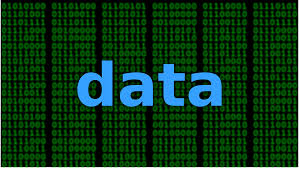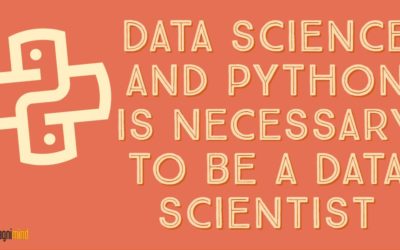With the emergence of data science, business success today heavily depends on the ability of deriving valuable insights from huge chunks of data. And businesses use these insights to develop their business strategies to grow and outperform competitors. In its simplest form, data science can be considered as a field where data is captured and analyzed to reach a logical solution. Previously only giant IT organizations were involved in this but today almost every business across industries like healthcare, finance, e-commerce etc are employing data science to make most out of the data they capture from different sources.
To accomplish this goal, data science professionals need the finest tools to leverage advanced techniques that can turn data into actionable insights. There’re some prominent languages like Java, C, C++ etc that can be used to make meaning out of data. However, Python has emerged as the most popular programming language used for data science, a StackOverflow survey revealed.
How is Python related to data science?

In the coding world, Python is considered as a kind of Swiss Army Knife. It supports structured programming, object-oriented programming, functional programming patterns, and more. For example, Google has developed TensorFlow, a deep learning framework that has been created using Python as the primary language.
Apart from Google, other tech giants like Netflix, Facebook, NASA etc have been using Python as a prominent language for a long time. There’re some particular situations where this language is the most appropriate data science tool to perform the job. For example, it’s perfect when statistical code is needed to be incorporated into the production database or when data analytics tasks need integration with web apps. The full-fledged programming nature of this language makes it an ideal fit for implementing algorithms.
How is Python involved in every stage of data science?

Let’s consider the goal of data science professionals once again – derive actionable insights from data. To accomplish this, some computational tasks are needed to be performed. Here, Python libraries like NumPy and Pandas can be used to perform the job quickly.
Data may not be readily available to data science professionals, so it needs to be scraped from the web. Here Python libraries like BeautifulSoup can be used to extract data from the web.
In order to drive insights, visualization of the data is a must. Here, libraries like Matplotlib are used to represent data in the forms of pie charts, graphs, and other formats.
The next stage is machine learning where tasks are made efficient and easy by using Python libraries like Scikit-learn.
Why is Python heavily preferred in the data science landscape?
Python is open source and free, and thus anyone can write a library package in order to extend its functionality. And data science is the field that has experienced the advantages of these extensions. Just to give you an idea of the popularity of Python in the data science field – 66% of data scientists reported using it daily, in 2018. Now, you may ask that what’s so special about Python? Let’s have a look.
Easy to learn
Python is widely considered as a beginner’s language because it doesn’t have any difficult learning curve, and a developer with fundamental knowledge can work with Python. If you compare it other languages used in data science like R, Python comes with a shorter learning curve and beats the competition by offering an easy-to-understand syntax. In addition, code implementation is less in Python, so data science professionals can spend more time to focus on the algorithms.
A wide range of data science libraries
One of the major factors that helped Python to take the most sought after place in the data science field is its wide range of libraries that can be used for analysis, visualization, scientific computing etc. Let’s quickly discuss some of them.
- Pandas: This Python library is used for data analysis and manipulation and it’s well suited for different data like tabular, matrix, among others.
- NumPy: NumPy or “Numerical Python” is a core Python library used for data science. It’s used for scientific computing and as a multi-dimensional container where data science professionals can perform various NumPy operations together with special functions.
- Scikit-learn: It’s one of the major attractions of Python where machine learning can be implemented. This free library contains efficient and simple tools for data mining and analysis purposes.
- Matplotlib: This is a plotting library for data visualization in Python. It’s used in Python scripts, web application servers etc.
- PyBrain: It’s another machine learning library of Python that offers modules for developing neural networks.
Scalability
Python has emerged as a scalable language compared to other languages like R. Python’s scalability lies in its flexibility that it offers to solve problems. As a result, it has been used by different industries to develop tools and applications of almost every kind.
Python Community
One of the biggest reasons behind the exponential growth of Python is its massive community. There’re millions of users who’re happy to offer suggestions or advice when a Python learner get stuck on something. And chances are, someone else has already been stuck there at some point of time.
Huge amount of python resources
As Python has become extremely prevalent in the field of data science, there’re lots of resources which are specific to using Python in the context of data science. Meetup groups for data science professionals using Python can be found across the globe.
Python and Machine Learning
In the data science field, machine learning is one of the major elements utilized to maximize the value from data. With Python as a major data science tool, exploring the fundamentals of machine learning becomes effective and easy. Put simply, machine learning heavily encompasses mathematical optimization, statistics and probability, and Python has become one of the most sought after machine learning tool that lets aspiring professionals do the math easily.
Apart from all these, Python comes with varied visualization options that help in creating graphical layouts, web-ready plots, charts, among others.
Simple steps to learn Python for data science

Today it’s evident that the future is extremely bright for data science professionals and learning Python is just the right thing to get your journey toward the field started. Let’s have a look at the steps.
Master Python Basics
First of all, you need to get the basics right to learn Python. There’re lots of ways to accomplish this – from taking a course to self-teaching to watching tutorials. However, we strongly suggest taking a course for this purpose. And if you’re looking to enter the data science field, look for courses that are particularly designed to teach you Python in the data science context. During this stage, try to join a learning community where you can find like-minded people passionate about Python.
Learn Python Libraries used in Data Science
Once you’ve gained a solid understanding of Python fundamentals, it’s time to learn Python libraries that are used in data science. The most important of these include Pandas, NumPy and Matplotlib. If you get stuck somewhere, seek help to a Python community and most likely you’ll get it.
Develop a Data Science Portfolio
Assuming you’re planning to enter the data science field, a proper portfolio is a must. Your experience in working on different datasets should be clearly mentioned. This not only gives your fellow learners something to collaborate on but also demonstrates the future employers that you’ve actually invested your time to learn Python. During this stage, you should start working on developing other data science essentials like soft skills.
Learn Advanced Data Science Techniques
This is the stage where you should be learning advanced Python and data science techniques. Ideally, you should take an advanced course from a reputed institute. There’re different options available like taking free online courses, learning by reading books, attending an immersive data science bootcamp etc. However, if you truly want to ensure that you’ve covered all the points and want to be job-ready quickly, enrolling with a data science bootcamp should be your best bet. That way, you’ll not only be able to pursue your dream at a relatively affordable rate but will be able to develop some greatly useful connections as well.
Keep on Learning
The field of data science is evolving quickly and the technologies and skills that are necessary to become a data science professional may not be the same tomorrow. So, you need to continue learning for both Python and data science fields to maintain a competitive edge.
In conclusion

For the above reasons and others, Python is so much beloved by data science professionals and programmers. Data science aspirants often come from different backgrounds other than computer science and feel extremely overwhelmed by the difficulty level of the field. But Python’s inherent simplicity and readability make it comparatively easy for them to pick up the learning pace. Also, the huge number of available dedicated analytical libraries means that data science professionals in almost every industry will find packages tailored to their needs already.



